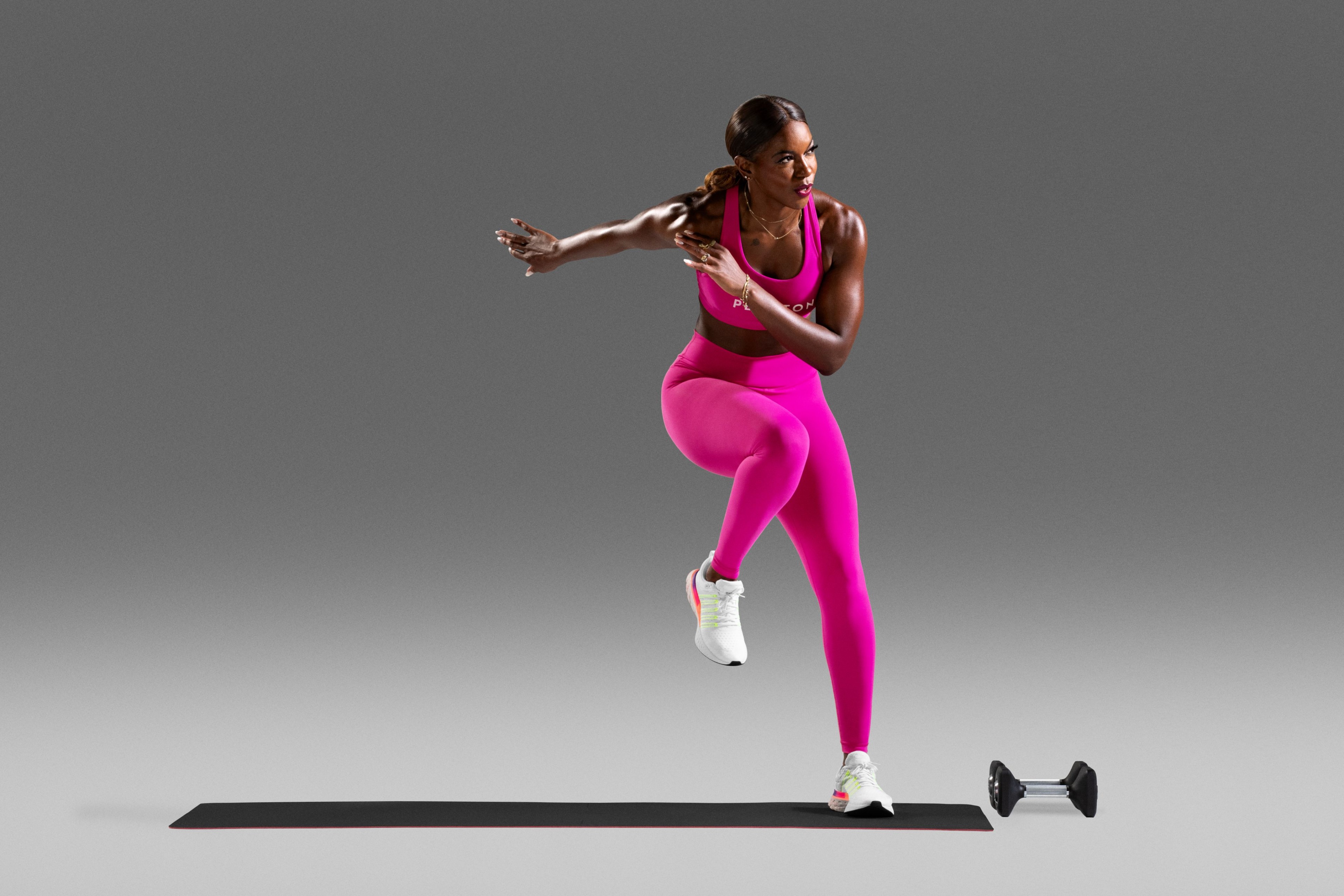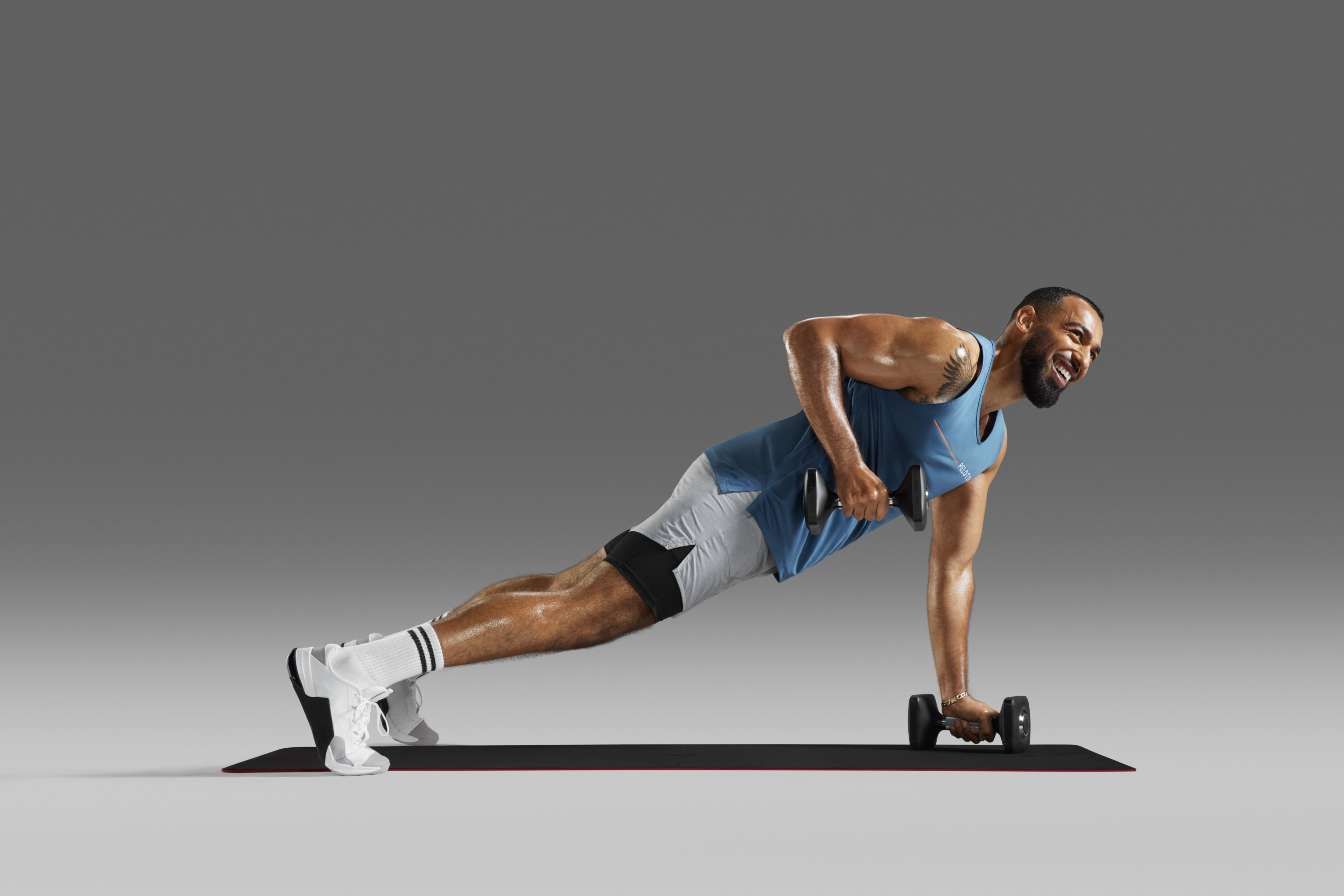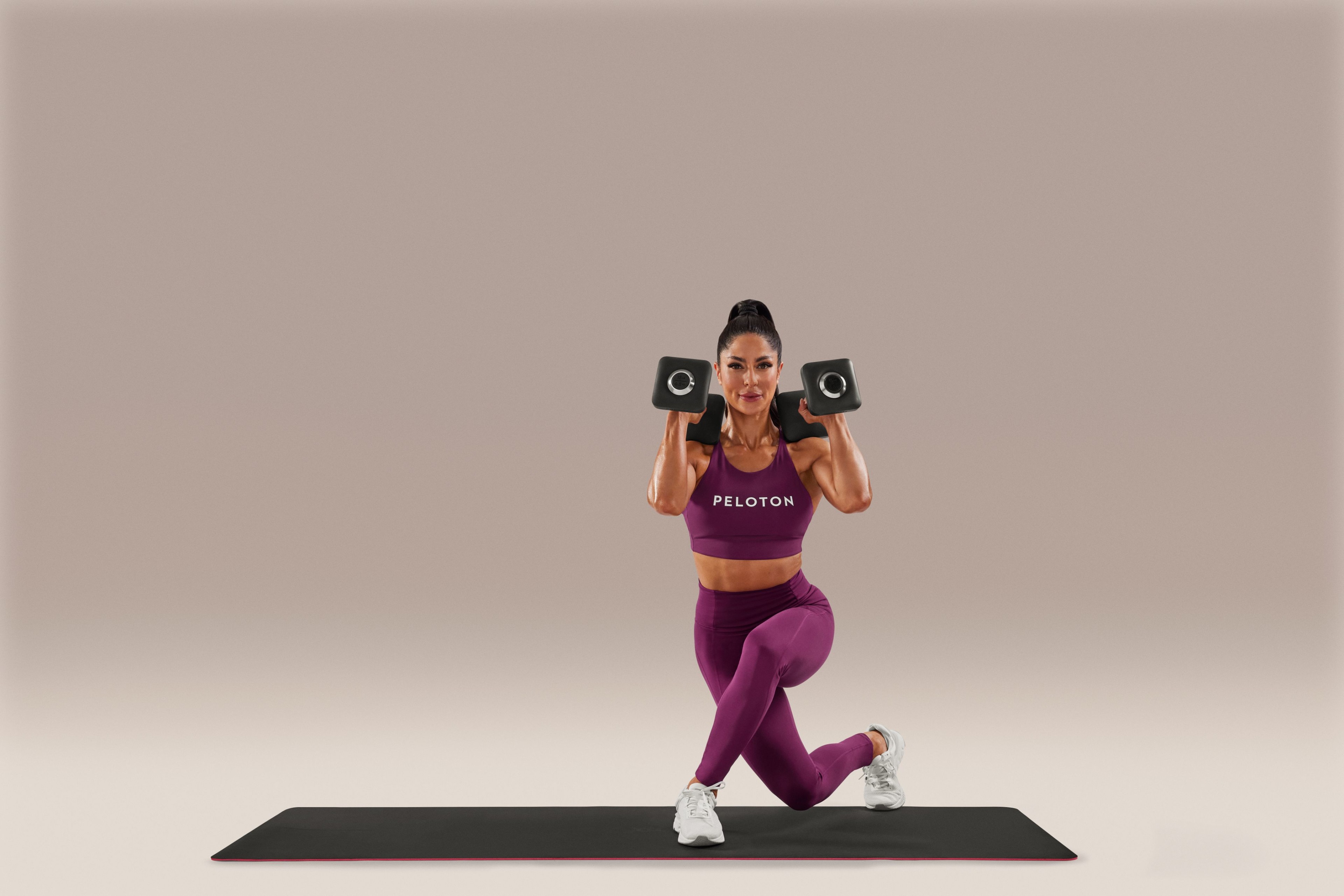Ready to change your life for the better? To feel great 24/7, become more energetic, boost your self-confidence, and have the drive and energy to achieve your most ambitious goals?
One of the best ways to feel your best and have a more positive mindset is to focus on enhancing your physical strength. But it will take more than just cardio exercise to do the trick. The real key to a stronger and healthier mind and body lies in including strength training into your regular exercise regimen.
The great thing about strength training is that it’s beneficial for almost everyone: male and female bodybuilders as well as anyone who enjoys a low-intensity workout. It’s also especially beneficial for men and women of a certain age who need to ensure their bone density is up to par. And, with a little help on proper strength training techniques from an expert Peloton instructor, it’s easy to incorporate the strength training you need into your everyday life.
Read on to learn how Peloton can help you maximize your strength training to achieve optimal health and athletic performance.
What Is Strength Training?
As its name implies, strength training–also known as resistance training–involves the performance of physical exercises specifically designed to improve strength and endurance. Although it is often associated with weightlifting, strength training includes a wide variety of training techniques for men and women such as:
Weight-bearing exercises
Isometrics (the tightening of specific muscle groups)
Plyometrics (exercises that combine speed and force, such as jumping rope, lunges, and clap push-ups)
In addition, strength training involves the use of tools such as dumbbells or resistance bands–along with your own body weight–to build muscle mass, strength, and endurance.
And that’s exactly what will happen if you follow the guidance of your Peloton instructor. In addition, you should also notice a significant improvement in your overall health.
Different Types of Strength Training
These include:
Agility – This refers to your ability to switch directions swiftly and powerfully and is characterized by quick accelerations in speed, direction, or velocity, as well as your ability to lift and use heavy weights in multiple directions. This form of exercise improves your coordination and balance and helps prevent injuries by helping your body move with ease and fluidity. You can work on your agile strength by carrying a medicine ball for about 60 seconds, doing lat (back) shuffles and direction-changing sprints, then resting for 60 to 90 seconds between sets, and repeating for three to five rounds.

Endurance – The focus here is on how long you can stay in motion using both aerobic and anaerobic techniques designed to help you remain stable for longer periods of time and enhance the aerobic capacity of specific muscles you’re working on. You can start with light weights or with weight-bearing workouts, such as 15 squats and 10 push-ups with little if any rest, then repeat for three to five rounds. As you become stronger, you can add more weight to your movements.

Explosive strength – This type of strength training involves quick and forceful movement that requires a burst of energy, quickly–such as jumping and powerlifting. It improves your speed of movement, coordination and improves the resiliency of your muscles and connective tissue. A good way to start explosive strength training is with five nonstop medicine ball throws from your chest to a wall with extreme force, then rest. During your second round, throw harder, or take a few steps and back and try to generate the same force. Perform five rounds of five reps.

Maximum strength – This refers to the maximum weight you can hold for a single rep. This type of workout not only builds strength, but also increases the levels of muscle-building hormones in your body as well as bone density, which is especially important for women as they get older. Using heavy weights with low repetitions, you can test your maximum strength with heavily weighted squats, hip thrusts, deadlifts, bench presses and powerlifting. However, you should follow a professionally designed program to avoid overtraining injuries and to allow yourself an adequate period of rest between sessions.

Speed – Speed training is designed to train your muscles to quickly accommodate a fuller range of motion to improve your flexibility and balance. The simplest way to work your speed strength is by sprinting for short distances.

Starting strength – This denotes your first burst of movement without momentum–like a runner on a track at the start of a race, or in powerlifting or competitive swimming. By working on your starting strength, you can improve the ability of your muscles and connective tissue to increase their rate of force, allowing you to accelerate or lift heavier weights and improve your athletic performance. This type of strength training helps to make your bones, muscles and joints stronger while improving your overall health. Ways to improve your starting strength include dead-start kettlebell swings, sprinter jumps, and sit-down squats.

Relative strength – Your relative strength is based on what you can accomplish based on your current body weight. This strength-to-weight ratio is why smaller individuals often have more relative strength than their bigger competitors. Your relative strength is determined by the maximum weight/number of reps you are able to perform, divided by your weight. Pull-ups are a great way to measure your strength-to-weight ability. As you grow stronger, you will be able to do more and the number will increase.

The Benefits of Strength Training

“Strength training helps you build muscles that support you in your everyday life and boost your metabolism,” says Peloton instructor Ben Alldis.
In fact, strength training can provide myriad physical and mental benefits for people of any age, size, or shape. These benefits include:
Maintaining muscle tissue – Starting at about 30 years old, growth hormones begin to decrease dramatically in the human body. In fact, you could lose as much as 10% of muscle mass and metabolism every decade thereafter. Strength training, just twice per week, can reduce that decline to only 1%-2% per decade. At that rate, you’ll only have 5%-10% percent less muscle tissue at 80 than you had at 30.
Improving bone health – Strength training has been found to increase bone density and strengthen tendons and ligaments. This reduces the risk of developing osteoporosis as you age and decreases the risk of bone fractures.
Controlling body fat – Building muscle through strength training enables your body to more effectively burn calories. Muscles burn a whopping three times the amount of calories that fat does. The more muscle tone you develop, the higher your metabolism will become. Of course, you should pair your strength training with proper nutrition to achieve the best results.
Decreasing your risk of injury – Improved muscle strength along with stronger bones reduces your risk of injury as you participate in sports and other activities. It also enables your body to become more resistant to general aches and pains.
Alleviating symptoms of depression – According to a meta-analysis published in JAMA Psychiatry, strength training not only boosts one’s physical strength, but it also has a substantial positive effect on your mental health. It can relieve depressive symptoms, such as low mood, loss of interest in activities, and feelings of worthlessness.
Your Strength Training Workout Schedule

Now that you know the benefits of strength training, it’s time to get started. There are a variety of ways to include strength training into your usual weekly routine. Here is one way, courtesy of Peloton instructor Andy Speer’s Total Strength program, with each session taking just 20-30 minutes of your time:
Monday: Full-body strength training
Tuesday: Bodyweight strength training
Wednesday: Upper body strength training
Thursday: Bodyweight strength training
Friday: Lower body strength training
Note: Always warm up before any workouts, no matter how short or focused.
Peloton also offers various workout plans based on your specific goals and the exercises that you most enjoy and will adhere to.
Tips for Getting Started and When to Expect Results

In addition to guidance provided by your doctor and/or workout instructor, here are some general safety suggestions related to strength training:
Throughout your strength training, it is important you maintain proper technique. If you are unsure of whether you are doing an exercise correctly, follow along with the Peloton instructor’s directions.
Start your weight training exercises slowly. Once you can easily complete 12 repetitions with a particular weight, gradually increase the weight.
To reduce your risk of injury, only use safe and well-maintained equipment.
Breathe normally while lifting. Exhale during exertion and inhale during the relaxation phase.
Control your weights at all times. Avoid lifting them up and down abruptly or using momentum to swing them through their range of motion.
Maintain good form while lifting. Only lift weights within your own capabilities and slow down or stop if you feel the weight is too heavy.
Use the full range of motion when lifting a weight to develop the strength of your muscle at all points of the motion of the joint. This decreases the risk of injury through overstretching.
Wear appropriate and comfortable clothing and safety equipment (including gloves) that do not restrict movement and allow you to perspire easily.
Maintain correct posture and body positioning at all times to reduce the risk of injury.
When you finish a set, place the weights gently on the floor to avoid injury.
Skip training if you are overtired or ill. Do not train through an injury. Instead, stop your workout and seek medical attention if necessary. Resume your routine once you are feeling better.
After a workout, rest the muscle group for at least 24 hours before continuing to work the same muscle group again.
Bear in mind that strength training is a gradual process. Depending on your goals and the type of strength training you are doing, it can take time to see tangible results. With the help and encouragement of your expert Peloton instructor, you should notice a difference within three to four weeks. Be patient, determined and stick to your workout program.
Summary: Strength Training Makes You Stronger

By incorporating strength training exercises into your fitness routine, you’ll notice gradual improvement in your strength and endurance over time–even if you’re not in the best of shape when you begin.
As your muscle mass increases, you'll not only be able to lift weight more easily and for longer periods of time, but you’ll also see a marked improvement in your overall health and emotional well-being. You’ll burn more fat, thereby maintaining a healthy weight, and look and feel your best.
If you are a beginner and want to learn more about strength training and workouts that best suit your fitness goals, visit https://www.onepeloton.com/classes.
Your Source for Strength Training Instruction
As the leading interactive fitness platform globally, Peloton offers a wide variety of exercise equipment including the Peloton Bike, Peloton Bike +, and Peloton Tread.[Links]
In addition, the Peloton App is loaded with a variety of strength training classes that can help you reach your goals. And the Peloton Guide, our TV-connected strength device, makes it simple to keep an eye on your form during workouts.
If you own Peloton equipment, your membership includes a full suite of strength, stretching and other classes. If you use the Peloton App exclusively on your phone, computer, tablet, or Roku TV, you’ll also have access to all of the cardio, stretch, and strength coaching that Peloton has to offer.
For more information, visit https://www.onepeloton.com/guide and click on Strength.
Sources:
This content is for informational and educational purposes only and does not constitute individualized advice. It is not intended to replace professional medical evaluation, diagnosis, or treatment. Seek the advice of your physician for questions you may have regarding your health or a medical condition. If you are having a medical emergency, call your physician or 911 immediately.



